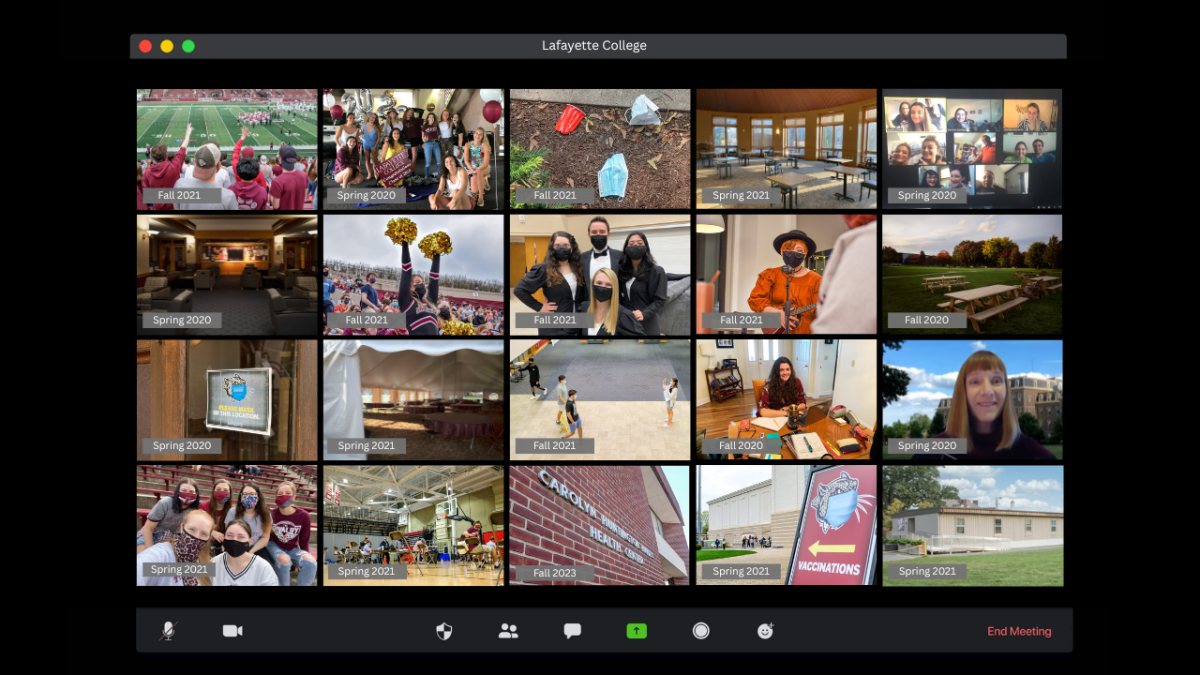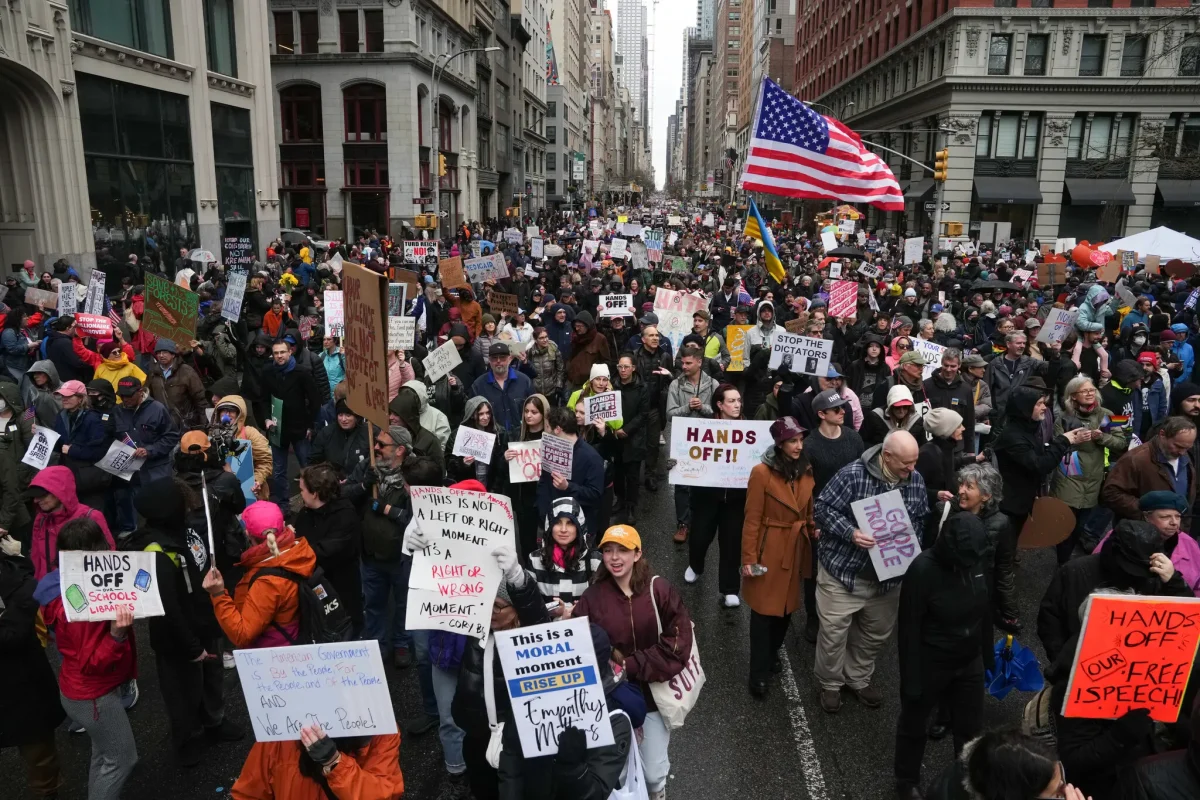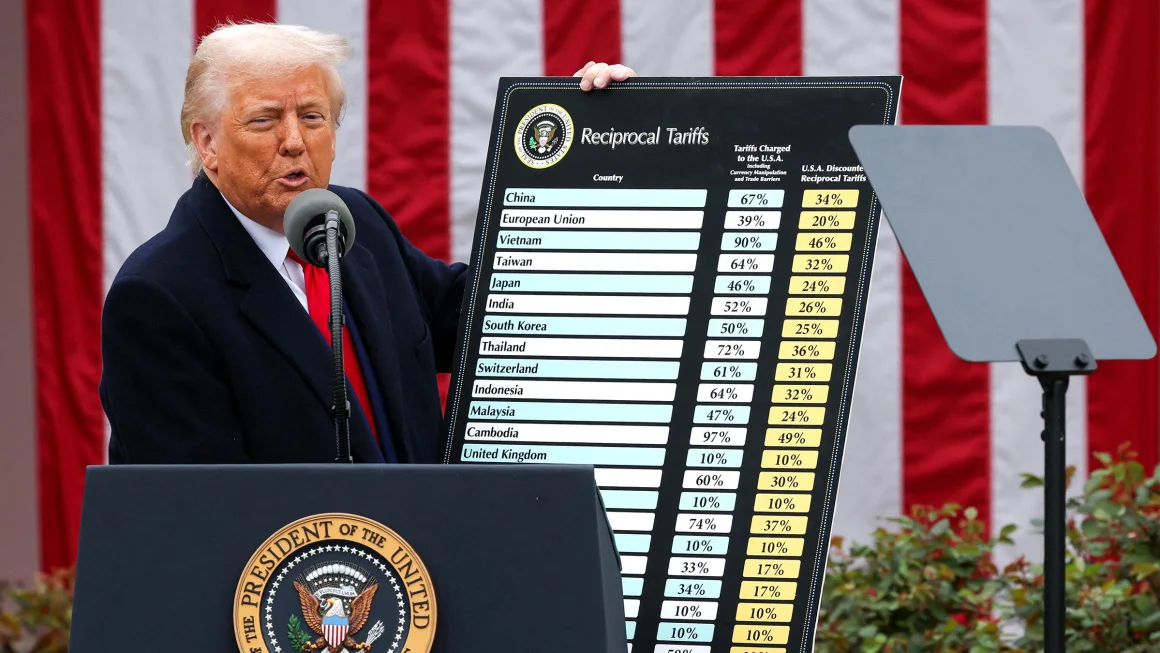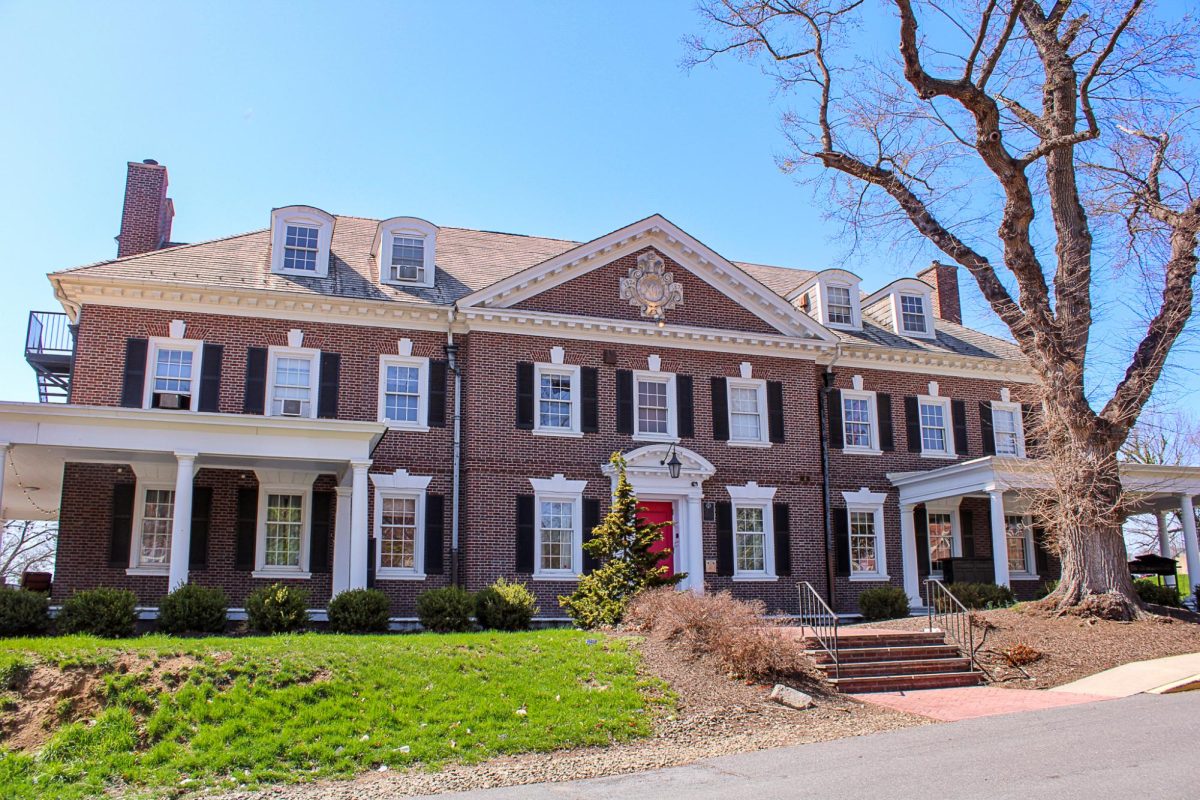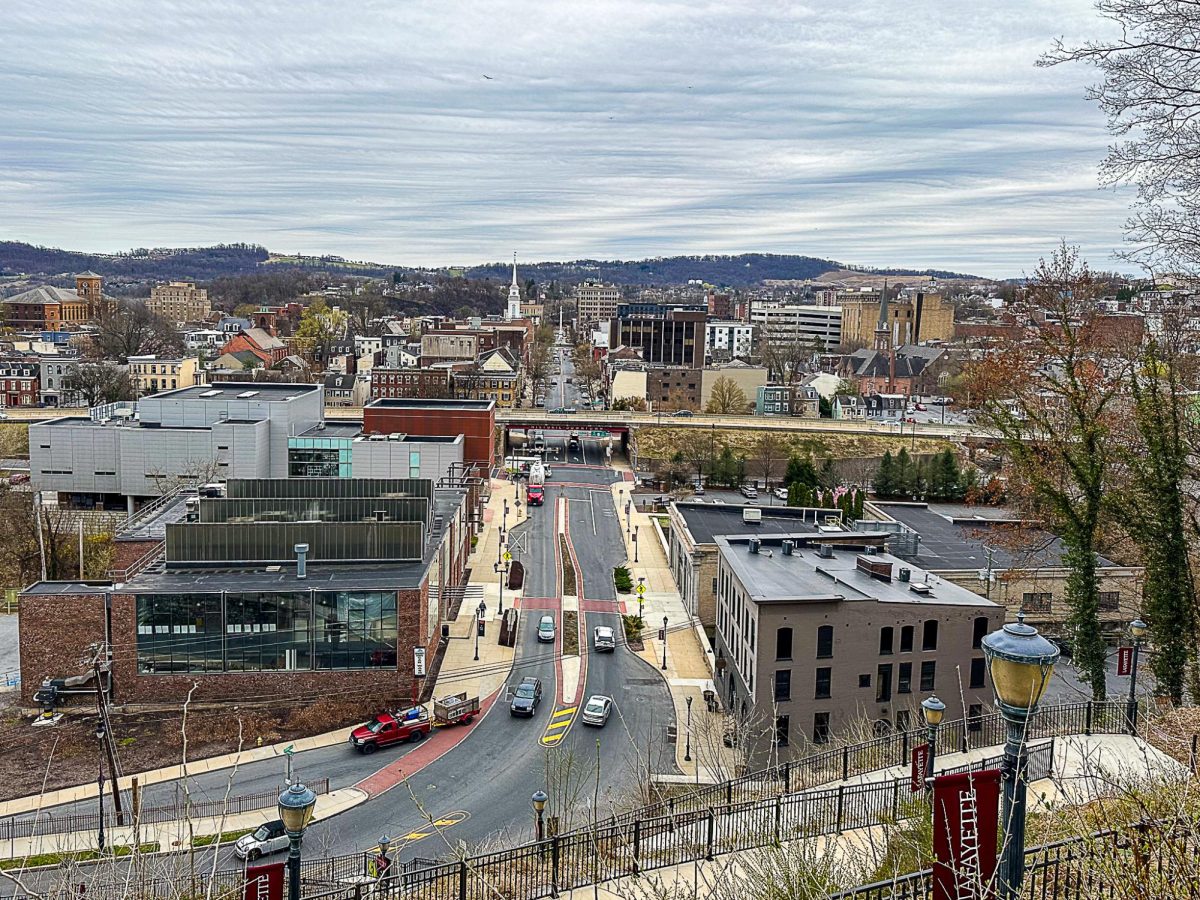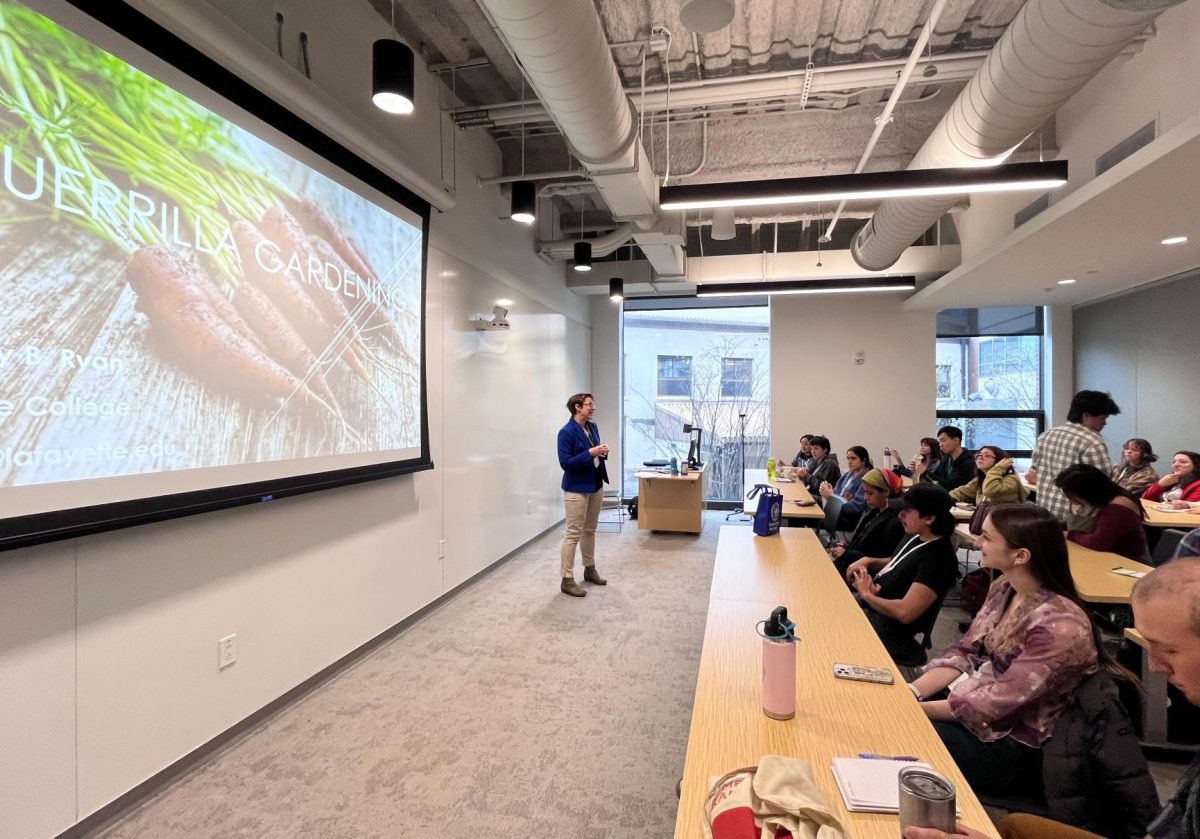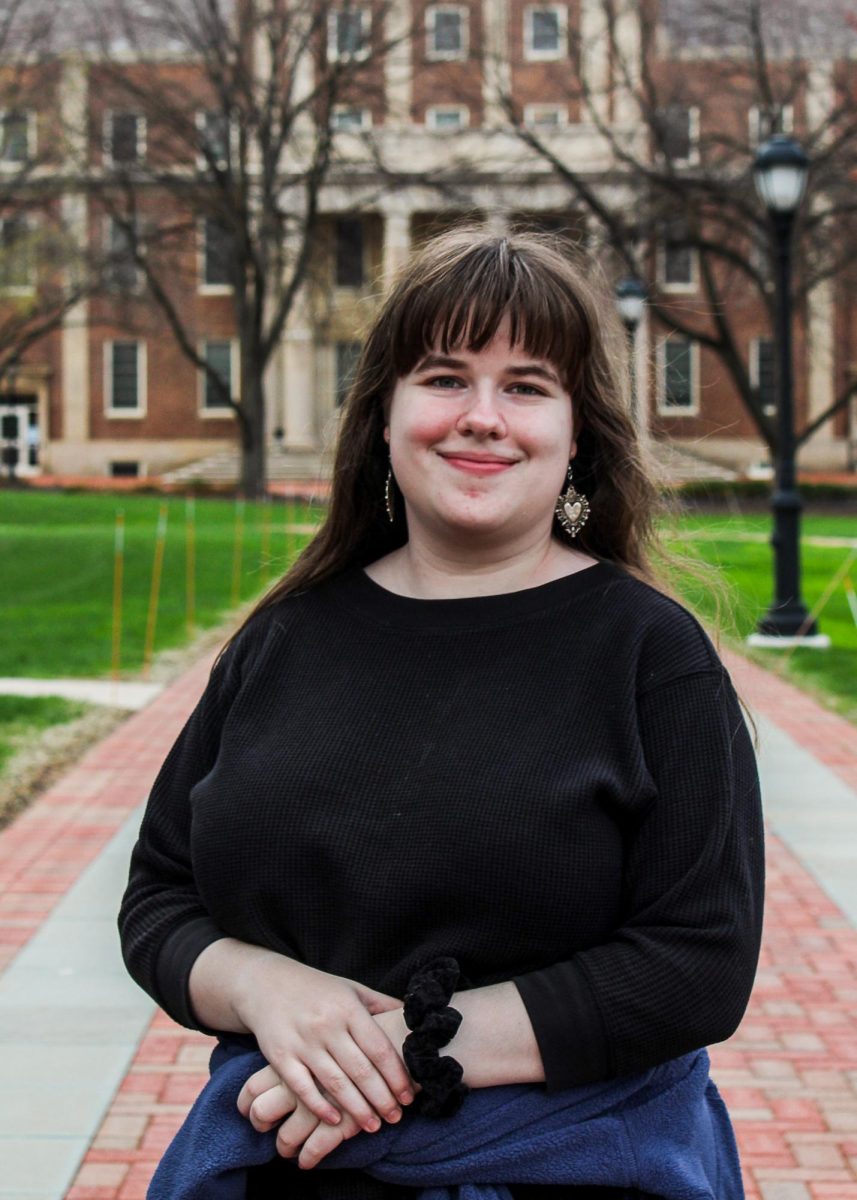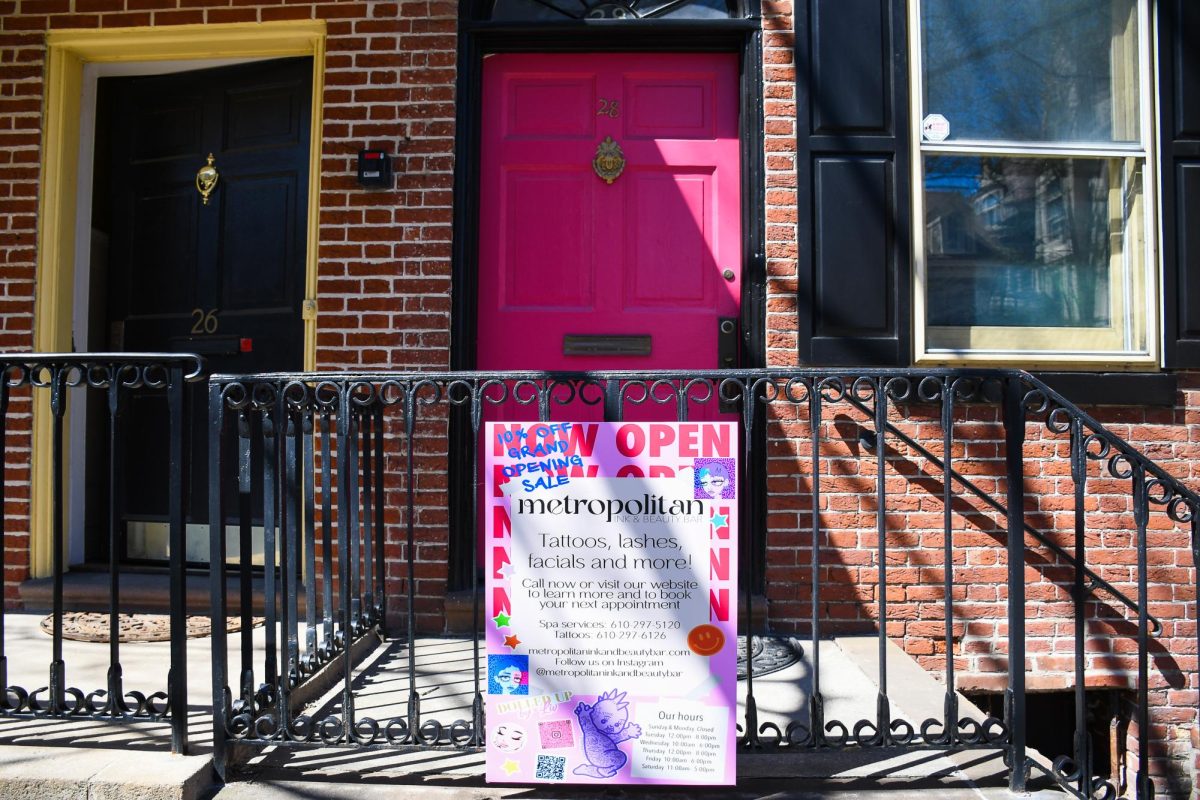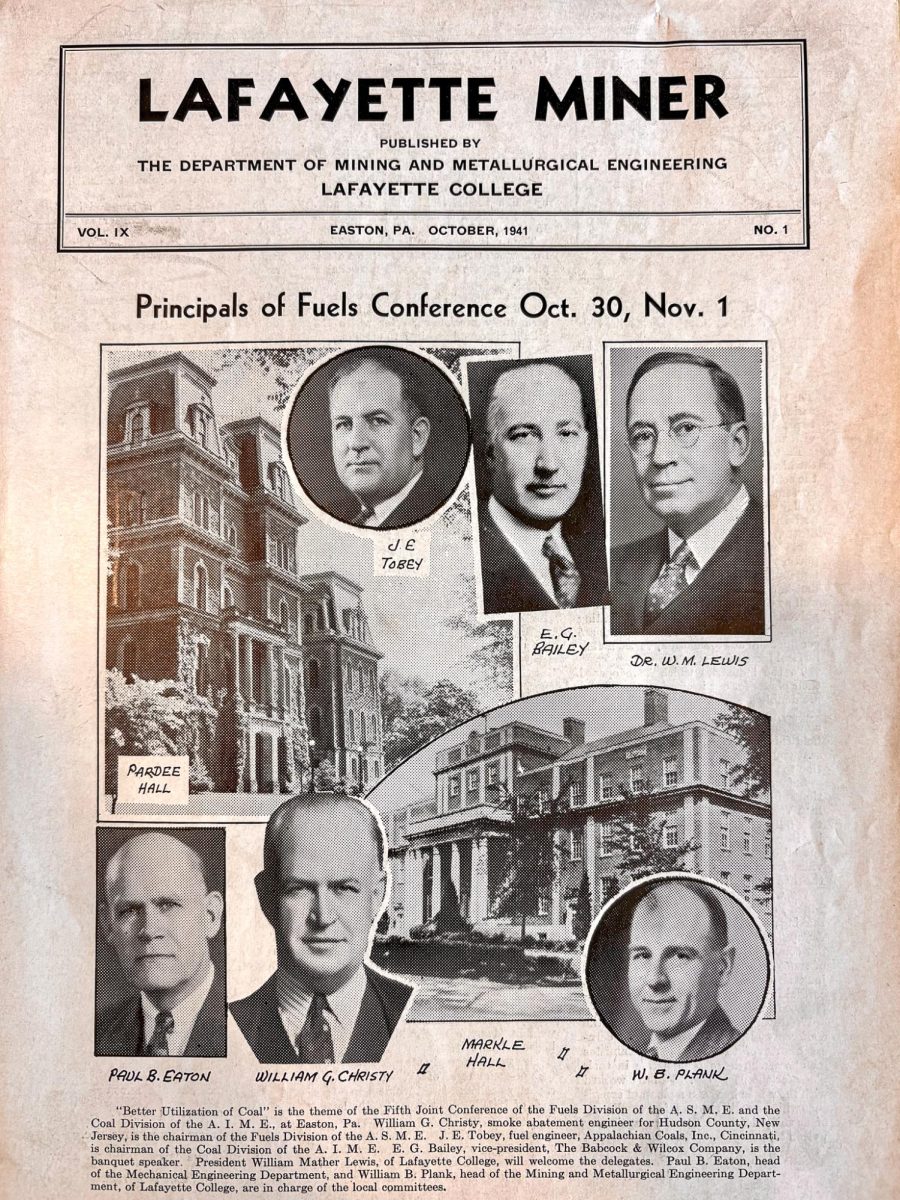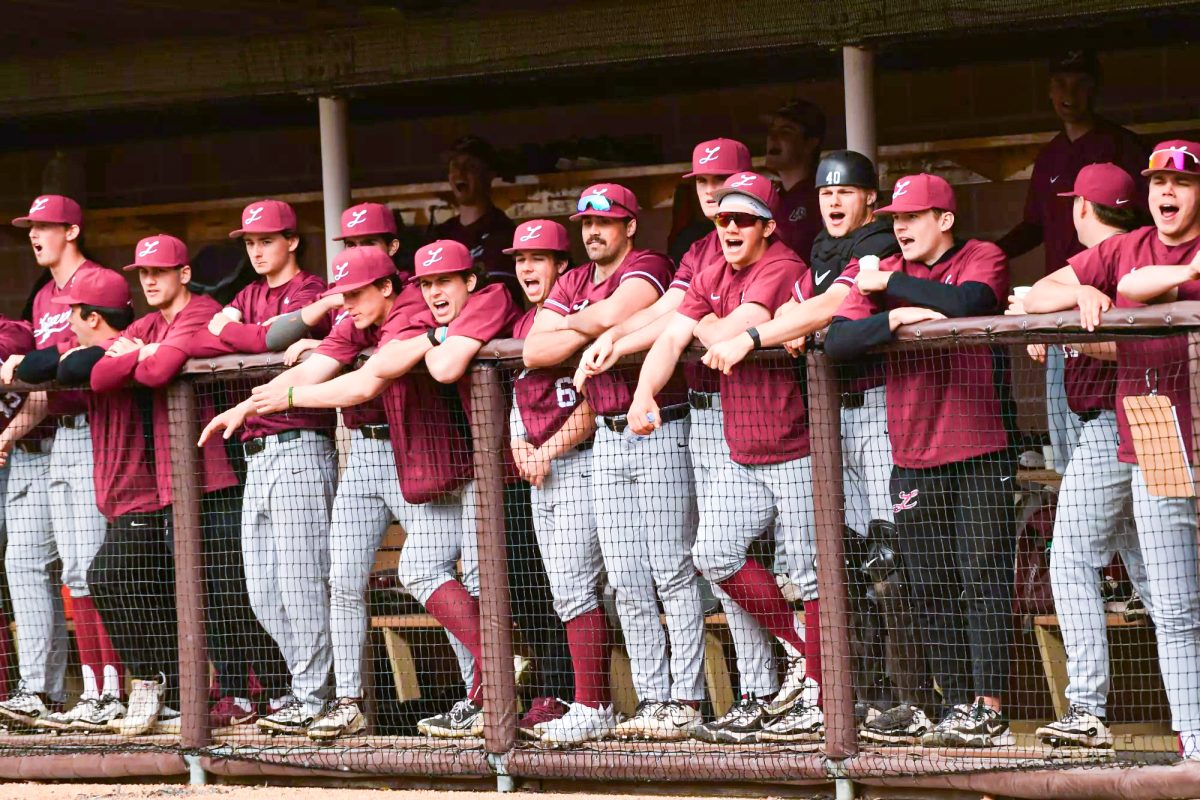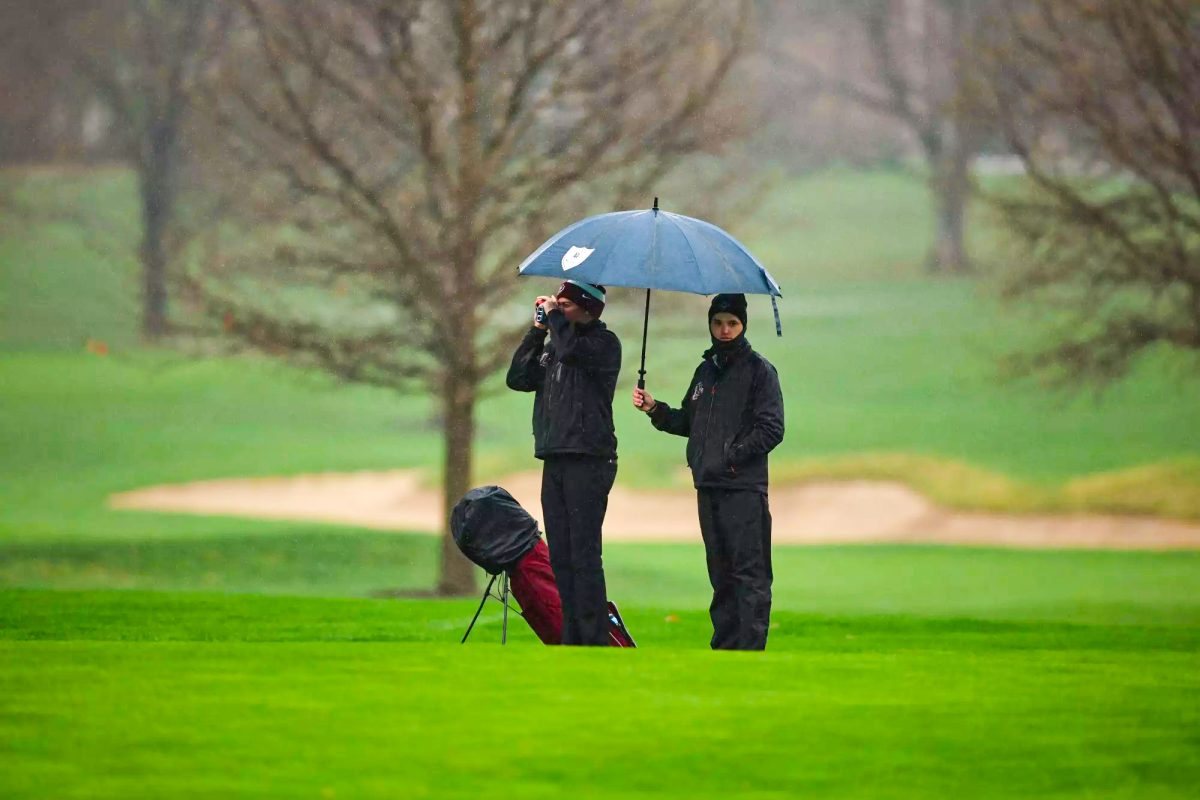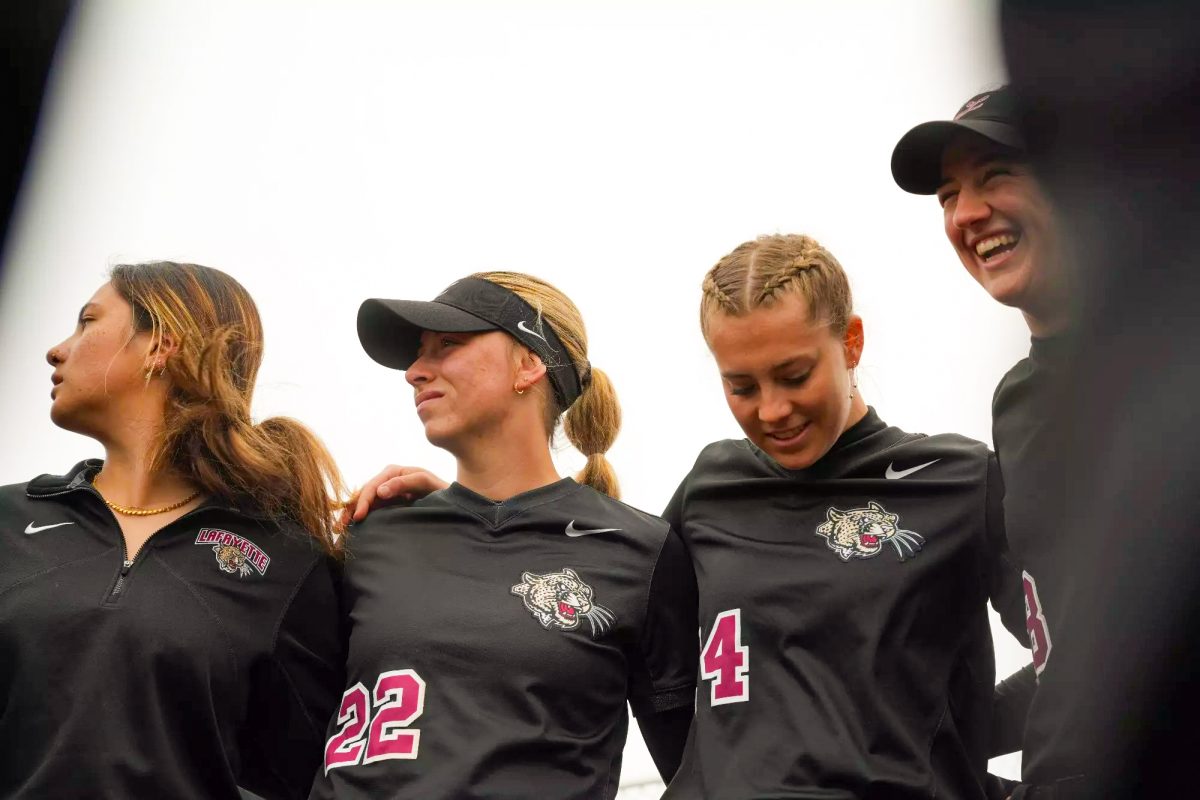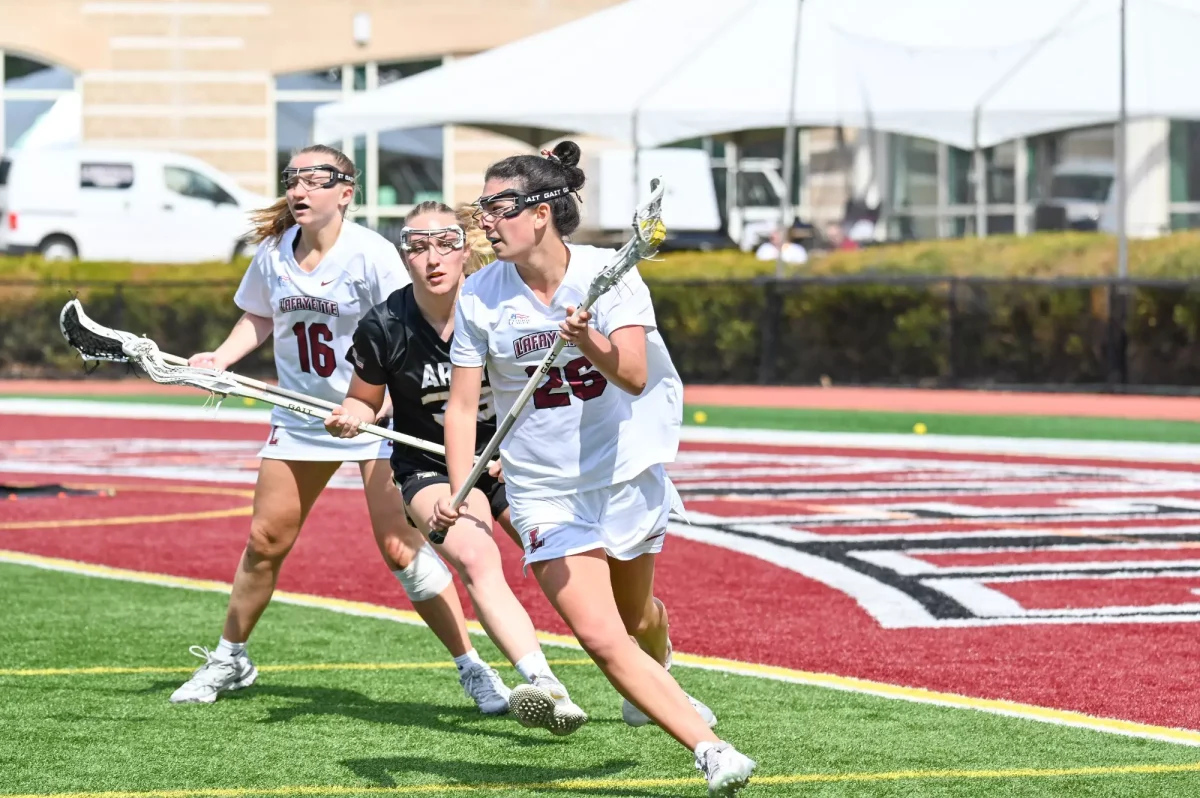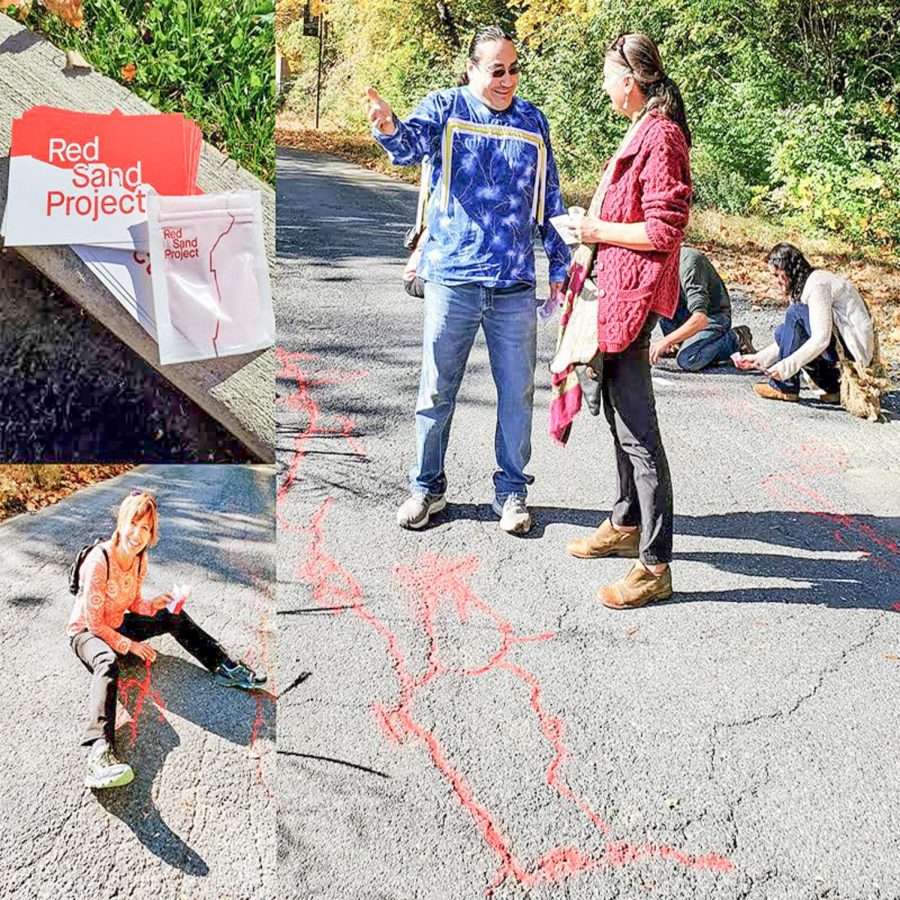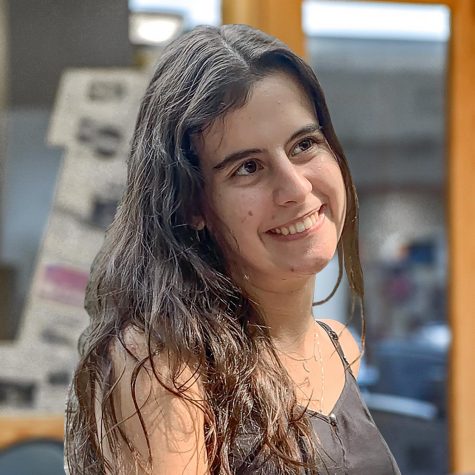Red Sand Project highlights vulnerabilities that allow people to ‘slip through the cracks’
The Red Sand Project on the Karl Stirner Arts Trails centers victims of human trafficking and exploitation through an exhibit of red sand in cracks on the ground. (Photo courtesy of Jim Toia)
November 5, 2021
There’s a new art exhibit on the Karl Stirner Arts Trail. Students can find it just by looking under their feet.
The installation, called the Red Sand Project, takes the form of red grains of sand embedded in sidewalk cracks. According to Jim Toia, executive director of the Arts Trail, the approach to this project is symbolic. The grains of sand are a metaphor for the individuals who “fall through the cracks” of our social, political and economic systems, as well as our collective consciousness, resulting in vulnerabilities that lead to human trafficking and exploitation. Toia described the project as “artistic activism at its core.”
The Red Sand Project was created by Molly Gochman in 2014 in New York City. Now, many installations can be found around the world, including on campus, as of Oct. 21. Students can find the permanent installation at the Trailhead Arch on Bushkill Drive behind Don Juan’s.
The project was introduced to Easton by Maria Ragonese, a co-founder of “PAZA, Tree of Life,” a nonprofit organization that seeks to empower the Indigenous people of Turtle Island.
“My hope is that [Lafayette students] will feel passionate about what the project represents and will get involved where and when they can to promote safety and awareness, especially to the most vulnerable, women and children,” Ragonese wrote in an email. “No one should ever disappear without a trace.”
“The goal is that [the Red Sand Project] will start conversations on human trafficking with an emphasis on awareness and self-protection,” Ragonese added.
November is Indigenous People’s History Month. Ragonese hopes that the project will highlight how human trafficking disproportionately affects Indigenous women.
“One of the issues that we are bringing attention to is Missing and Murdered Indigenous Women [MMIW], which is a huge problem on reservations today, one that needs as much attention as possible since Indian Country doesn’t get a lot of media attention,” Ragonese wrote. “Since the project is visual…we felt that it would be a perfect installation for the Arts Trail as a way to bring awareness to MMIW, but also human trafficking on a whole, which is a global problem.”
The Red Sand Project also raises questions about migration and freedom of movement by playing with earthworks and borders, emphasizing how refugees are another population that is susceptible to exploitation.
In a broader context, Ragonese explained that the importance of the Red Sand Project is “to take pause and remember those taken from this earth way too soon through acts of violence. We all bear the responsibility of making this world a safer and better place.”
People can participate in the movement by filling sidewalk cracks near them with red sand and documenting it on social media using #RedSandProject. The project provides these materials free of charge; participants only have to pay for shipping. More information on how to participate can be found on The Red Sand Project website.
“There are many broken systems that allow people to slip through the cracks. I hope students will be inspired to create change in the world,” Ragonese wrote.

